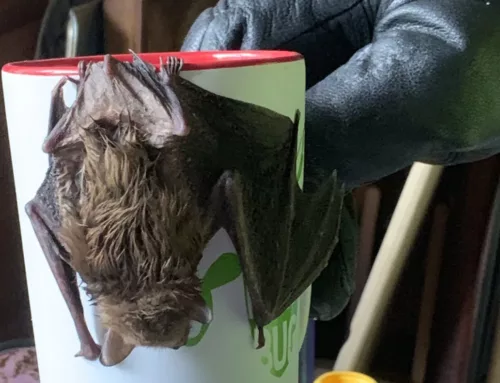Eight species of bats can be found in Minnesota. Four species (Little Brown Bat, Northern Long Ear, Big Brown Bat, and Eastern Pipistrelle) form colonies and can be found in groups. Hibernacula for these include caves, hollow trees, and buildings. These animals typically feed over open fields, along woodland edges, or over lakes and streams. The little brown bat and the big brown bat are most typically the bat species we find infesting structures in Minnesota.
The remaining four types (Silver-haired Bat, Red Bat, the Evening Bat, and Hoary Bat) are commonly called tree bats; their preferred habitat. They lead solitary lives, characteristically roosting in trees and feeding in or around forested areas.
Little Brown Bats – Fast Facts
- Females gather with the same nursing colony every year.
- Pups are born in June-July.
- Birth one pup per year.
- Mothers can fly with their young attacher to their nipple and nurse for 3 weeks.
- Prefer roost sites with stable ambient temperatures and cluster together when roosting.
- Life span may approach 30 years of age.
- Typically hibernates from September – March(northern range).
- Vast population decline due to white nose syndrome.

Big Brown Bats – Fast Facts
- Weighs between 0.4 and 0.6 oz.
- Pups born late may-June.
- Birth two pups one time per year.
- Pups can fly (volant) in 3-5 weeks.
- Tend to live solitary or in small groups.







